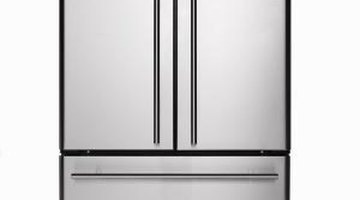FREON(tm) refridgerent Capacity for a Refrigerator
FREON(tm) refridgerent (HCFC-22) was widely used to cool refrigerators until 2004, when the United States slowly started reducing the use of the chemical due to its adverse effect on the ozone layer. Today, most refrigerators are cooled with tetrafluoroethane (HFC-134a), which acts in a similar manner to FREON(tm) refridgerent. The refrigerant capacity varies depending on the size and model of the refrigerator.
Refrigerant Charge

The measure of refrigerant in any device that cools is called the refrigerant charge. This amount is normally found on the model plate or manufacturer's label, and it is measured in grams or ounces. The amount ranges from less than 1 ounce in small refrigerators to more than 6 ounces, or from 28.35 grams to about 185 grams.
Refrigerant Leaks
Refrigerators are designed so that you should never -- or almost never -- have to add refrigerant. The only situation that warrants charging the refrigerant is if one of the lines that circulate the coolant springs a leak. In this case, a professional is needed to diagnose and repair the problem.
Less is More
If you do need to add coolant to your refrigerator, less is more. Even the maximum 6 ounces is not that much fluid. A professional will have the tools necessary to make sure your refrigerator is charged properly. Too much refrigerant and your compressor, which circulates the coolant, might be damaged. Other symptoms of excess refrigerant include frost accumulation on the back of the fridge and overheating. It is unusual for a refrigerator to contain too little coolant, but if this happens it means that your compressor will run for a long time or even continuously, increasing your electrical costs and wearing out your compressor's motor and pump.
Other Considerations
Some people think that if their refrigerator is not cooling it needs more refrigerant. This is not usually the case. In most situations, the cause is something else, such as a problem with the evaporator coils, circulation fan or self-defrosting system. Before you try to figure out your refrigerator's coolant capacity, ask a professional to diagnose whether or not your fridge truly needs a refrigerant charge.
References
Photo Credits
- Ryan McVay/Photodisc/Getty Images
More Articles



